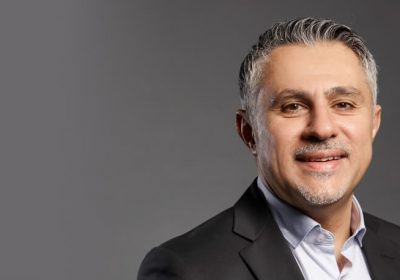
- Author: Nina Hendy
- Posted: February 14, 2022
How CFOs can Create & Manage an Efficient, Agile Workforce
CFOs starting the new year are quickly realising that the workforce will never return to how it once was.
In two years, the pandemic brought down the corporate walls, which has been replaced with a hybrid workforce. This is the biggest change to the workforce in modern history.
CFO Magazine’s lunchtime webcast bought together an outstanding panel for the first time to discuss these issues.
The panel featured leading Futurist, Mark Pesce, workforce technology expert Damien Durston, joining live from the UK was Nick Gallimore, Director of Talent Transformation and Innovation at Advanced and renown Chief Economist Stephen Koukoulas to discuss the opportunity CFOs and business leaders have to create and manage the most agile and efficient workforces.
Host Kim Skubris set out to ascertain if workplaces can return to normal in 2022, and if that’s for the best in the live event.
The Hybrid Paradox
Mark Pesce points out that we seem to be battling a ‘hybrid paradox’ in which people want the flexibility to work from anywhere, anytime, and to also be part of a good culture.
Workplaces managed to transition from entirely in the office to entirely online without breaking stride. We didn’t even notice it at the time, he points out.
But we’ve started to see old patterns start to return, raising questions about whether the flexible work week has returned, or whether it’s simply a redefinition what the old pattern was.
“We have to figure out how to find out way through this. The big issue is most employers don’t trust their employees to do the work they’re assigned. So they feel they have to check in on them during the working week,” Pesce says.
This is partly due to the fact that remote management is a skill that managers haven’t mastered yet. “Most corporate structures so hell bent on power and control, and this is the entire frustration of the workforce,” he says.
Stepping Back in Time
Nick Gallimore agrees, adding that he questioned whether the back to work period in 2022 was no more than a step backward.
The potential for mass resignations in 2022 as disengaged employees seek out should serve as a wake-up call for CFOs, he says.
“This is not just headlines, it’s a major phenomenon,” he says.
“Here the UK, we are slightly further down the journey towards what is that true hybrid work, and how that plays out for the employee.
“The way I look at it, this is a genuine inflection point for organisations for their people. We’ve been tracking numbers around this over the last 18 months, and mid-last year, we looked at leaving intention among employees, and it was at an all time high, with as much as 50 per cent of people in the workforce thinking of leaving, and what we’re seeing now is that that is starting to translate into much higher rates of attrition,” Gallimore says.
He adds that the potential for mass resignations is a symptom of a completely uncoordinated and unplanned change in a really short space of time that wasn’t well planned for. “The world experienced 10 years of change packed into 90 days at the start of the pandemic,” he says.
Planning for Uncertainty
Businesses facing challenges around supporting and remaining connected to their employees, he says.
“Companies need to put the right tools and processes to future-proof their business,” he says.
Since Covid struck, there has been an incredible transition in the economy, Stephen Koukoulas adds.
“We’ve got this situation where the economic shock of Covid, had governments and central banks throwing literally trillions of dollars at the problem.”
With workplace commute times down to 30 seconds as workers cross the floor to the kitchen table, productivity improvements have been realised in many workplaces. These need to be taken into account by management, he says.
Many are grappling with a major talent shortage, which has meant that people can’t find suitable workers for their business. It means that labour costs will continue to be a major challenge for companies in the coming year or two he says.
“I poached someone from my competitor, and then the competitor is increasing their base pay to retain their staff. This is a very rare event in global economic circumstances,” Koukoulas says.
The panel agreed that the bridge that we need to cross is continuous negotiation between employer and employee and checking in with the needs of the team and constantly staying oriented.
Pesce added that the fact was that the dilemma is that the more remote the workforce becomes, the greater the need for face-to-face interactions.
“We need those face-to-face moments to help us build up empathy for our co-workers. We know from research conducted during the pandemic that the more remote a worker is, the more face-to-face time with a manager they should have,” Pesce says.
Businesses need to figure out how to get people who live more than three hours from their office into the office on a regular basis.
“Since businesses aren’t paying for office space for the worker, some of that should be spent on travel and accommodation funding so remote workers can come in on a regular basis to connect with their teams,” Pesce adds.
In wrapping up, the panel agrees that the key moving forward is going to be future proofing their respective businesses, and to be in a continual state of learning this year.
The big job here is to make sure we’re all climbing the ladder – together.
Key points for CFOs:
- Give and take is key for both employees and employers.
- Employers need to get the basics right (payroll, hours, compliance) – before aiming any higher
- Pay rates are on the rise and poaching is rife in the market.
- CFOs and managers need to learn how to manage remote teams better.
- Employee wellness and burnout is a major concern for organisations.
- Workplaces need to always be learning, or they are going backwards.








